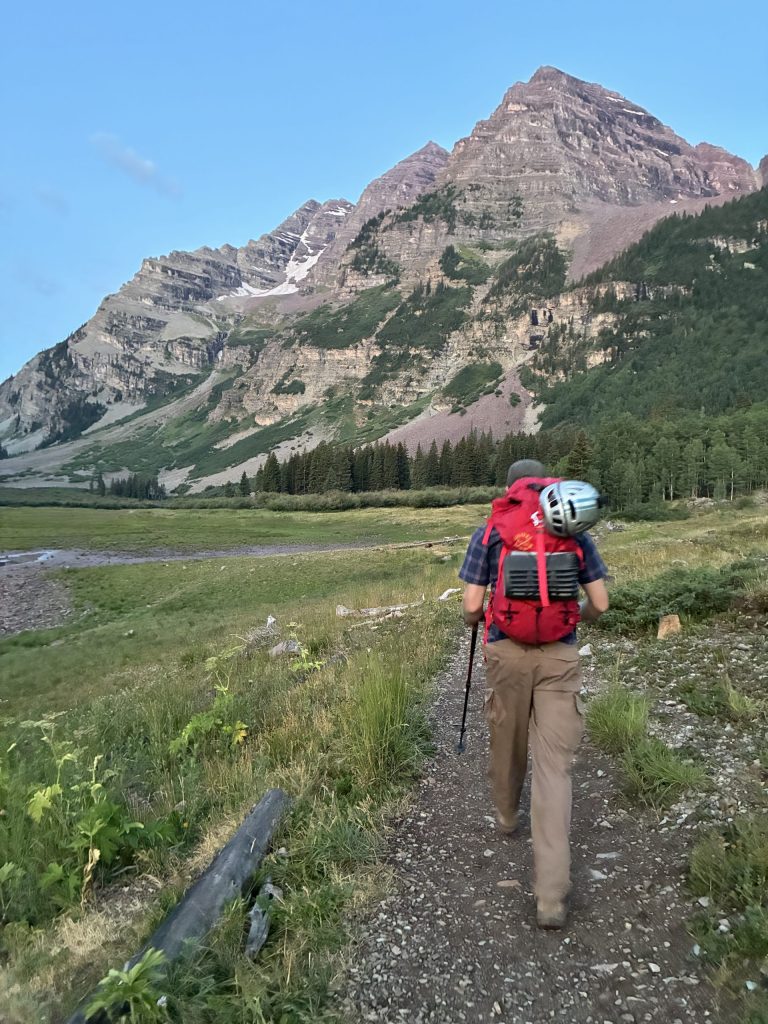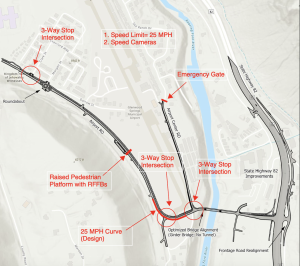Roaring Fork Outdoor Volunteers to improve Crater Lake trail
Project will celebrate the organization’s 30 years in the valley with a crew of 40 volunteers

Beau Toepfer/The Aspen Times
Roaring Fork Outdoor Volunteers is dedicating one of its 52 annual field days in the Maroon Bells Wilderness to building wooden check steps — effectively a waterbar — to improve the sustainability and longevity of the trail to Crater Lake.
RFOV functions almost exclusively through volunteer effort, with only one paid backcountry trail maintenance crew consisting of four crew members who spend eight days in the field working on trails that would otherwise be difficult to access.
Over the past several years, RFOV has primarily focused those paid backcountry efforts on the Four Pass Loop, one of the U.S. Forest Service’s priority trails, because of the high usage and need for maintenance.
Volunteer trail maintenance has become more important for improving and maintaining Forest Service trails after recent federal cuts to the USFS. According to Rebecca Schild, the executive director of RFOV, the Forest Service can no longer staff multiple trail maintenance crews, are struggling to send enough staff to prepare materials such as the logs that will be used on the Sunday outing, and are unable to send one supervisor out to ensure un-vetted trail maintenance crews are doing the proper work.
RFOV has proven themselves enough, however, that they no longer need a supervisor and are approved to do work without one.
“It is making them rely more and more on us,” Schild said. “That trail crew, like our backcountry trail crew program, is so important for them … but they’re working with us to make sure that we’re able to do it for the next several years, just because they realize it’s a critical piece that they have lost.”
According to Schild, the wooden check steps will require less maintenance and will likely last longer than a traditional waterbar trench would. This cuts down on the amount of work trail maintenance crews have to put in every year, as these check steps, and other sturdy, sustainable trail infrastructure, might be able to go several years without maintenance.
An RFOV group can maintain one to three miles of trail in a day, meaning they would likely take a day to maintain the 1.5 mile trail to Crater Lake every year, according to Schilds.
“In terms of what they can get done in a day, it’s so dependent on what the project is and how big the volunteer group is,” Schilds said. “I would say, just time and time again, our land manager partners are really surprised that volunteers get things done a lot faster than they think they will get things done.”
According to a 2022 Colorado Sun Article, 45% of White River National Forest visits were for non-skiing recreation in 2019, which includes activities like hiking, camping, cycling, and non-wildlife related visits. The same article stated the White River National Forest generates $1.6 billion in revenue, with numbers only expected to have increased since 2019.

According to David Boyd, public affairs officer for the White River National Forest, the Maroon Bells-Snowmass Wilderness has 175 miles of trail, and generally all of those trails need maintenance around once per year. To facilitate this, the Forest Service has a six-person maintenance crew plus 10 crew members from two separate partner crews. They also get support for one week from a Rocky Mountain Youth Corps Intern Crew.
Some of the trails around the Maroon Bells, including the lower sections of the trails to the summits of North and South Maroon peaks, have large rock stairs and retaining walls. The better trails limit erosion and can help protect plants and wildlife. According to Boyd, the robust trails may last decades or longer, albeit with regular maintenance. These trails may require more professional crews to construct, and, according to Schilds, crews could only construct two steps per day and still be moving at a good pace.
“Professional crews are crucial to training and guiding volunteers to accomplish trail work,” Boyd told The Aspen Times in an email. “Professional trail crews accomplish what volunteer projects can’t — specifically technical trail work and technical trail work in remote places.”
“It’s just such a supportive community, and I think a lot of people that were in these groups would have otherwise not been able to do a lot of the opportunities that they (RFOV) provided,” said Elsa Tullar, a former paid intern with RFOV.
For information on how to volunteer with RFOV, visit rfov.org/how-to-volunteer.

Support Local Journalism

Support Local Journalism
Readers around Glenwood Springs and Garfield County make the Post Independent’s work possible. Your financial contribution supports our efforts to deliver quality, locally relevant journalism.
Now more than ever, your support is critical to help us keep our community informed about the evolving coronavirus pandemic and the impact it is having locally. Every contribution, however large or small, will make a difference.
Each donation will be used exclusively for the development and creation of increased news coverage.










